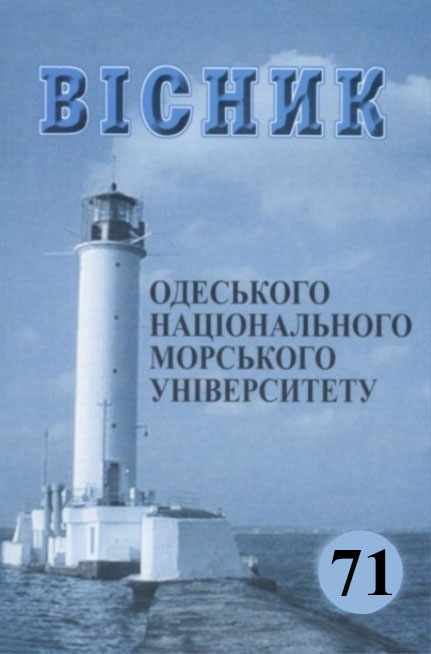Analysis of the modeling working processes methods of diesel engines
Main Article Content
Abstract
An analysis of the modeling working processes methods of diesel engines was carried out. In the field of modern methods for calculating the working processes of diesel engines, two directions have developed: thermodynamic and numerical methods. The latter are based on solving problems of fluid and gas mechanics by means of computer simulation. The calculation of the combustion process in thermodynamic models is reduced to the determination of the heat release rate, which depends on the fuel combustion rate dx/dφ. The unsolved task of calculating fuel combustion, taking into account the real characteristics of mixture formation and the kinetics of oxidation reactions, was established. A working methodology for calculating heat release characteristics based on indicator diagrams is proposed. When developing the calculation methodology, the following assumptions were
made:
- losses due to the dissociation of combustion products are not taken into account, which constitute for the combustion conditions in diesel 0,2-0,7 %;
- no adjustment of the lower heat of combustion for the value of the initial temperature of the reaction products and the change in the composition of the gas mixture, which is 0,8 %, was carried
It should be noted that these assumptions partially offset each other. Processing of the indicator diagram of the ship's low-speed diesel engine was carried out. The next stage of the analysis of the work process is the study of the combustion process. It is planned to create an information environment for physical and chemical processes in a diesel cylinder. With a great variety of ideas about the mechanism of the torch formation, as well as the role of various factors in the processes of mixture formation and combustion, the basic in all phenomenological approaches is the description of the behavior of an atomized fuel drop. Taking into account this circumstance, the analysis, and later the synthesis of the work process, was performed taking into account the regularities of heating and evaporation of a single drop. The method of analysis of mixture formation processes and the algorithm of data preparation for evaluating the conditions of the combustion process are presented. A combined approach was used: a combination of phenomenological and stochastic methods. The final result of the combustion process analysis is the determination of the chemical reaction rate coefficient for bimolecular fuel combustion scheme. Four factors are taken as determining these: the temperature of gases in the cylinder, the total proportion of burned fuel, the concentration of fuel prepared for combustion and the concentration of oxygen. The coefficient of determination (multiple correlation coefficient) of the regression dependence was R2 = 0,9169.
Article Details
References
2. Vibe I.I. (1962 ) Novoye o rabochem tsikle dvigateley[New information about the operating cycle of engines ]. M.: Mashgiz, 272. (in Rus.).
3. Watson N., Pilley A.D., Marzouk M. A . (1980). Combustion Correlation for Diesel Engine Simulation . SAE Tech. Pap. Ser. 800029, 1-19.
4. Austen A.E.W., Lyn W.T. (1960). Relation between Fuel Injection and Heat Release in a Direct Injection Engine and the Nature of the Combustion Process. Proc. Inst. Mech. Ehg. 1, 47-62.
5. Woschni G., Anisits F. (1974). Experimental Investigation and Mathematical Presentation of Rate of Heat Release in Diesel Engines Dependent Upon Engine Operating Conditions. SAE Paper. 740086, 1-21.
6. Shipinski J., Myers P.S., Uyehara O. (1969 ) A Spray-Droplet Model for Diesel Combustion . Proc. Inst. Mech. Engrs. V. 184. Part 3J, 28-35.
7. Whitehouse N.D., Way R.J.B. (1971) A Simple Method for Calculation of Heat Release in Diesel Engines Based on Fuel Injection Rate. SAE Tech. Pap. Ser. 710134, 1-19.
8. Merker G.P., Schwarz C., Stiesch G., Otto F. ( 2006 ) Simulating Combus- tion . Berlin: Springer-Verlag, 395.
9. Cong G., Theotokatos G., Chen H. (2015). Analysis of Two Stroke Marine Diesel Engine Operation Including Turbocharger Cut-Out by Using a Zero- Dimensional Model. Energies. 8, 5738-5764. doi:10.3390/en8065738/- www.mdpi.com/journal/energies.
10. Guan C. Computational investigation of a large containership propulsion engine operation at slow steaming conditions / C. Guan, G. Theotokatos, P. Zhou, H. Chen // Appl. Energy. ‒ 2014. ‒ № 130. ‒ P. 370-383.
